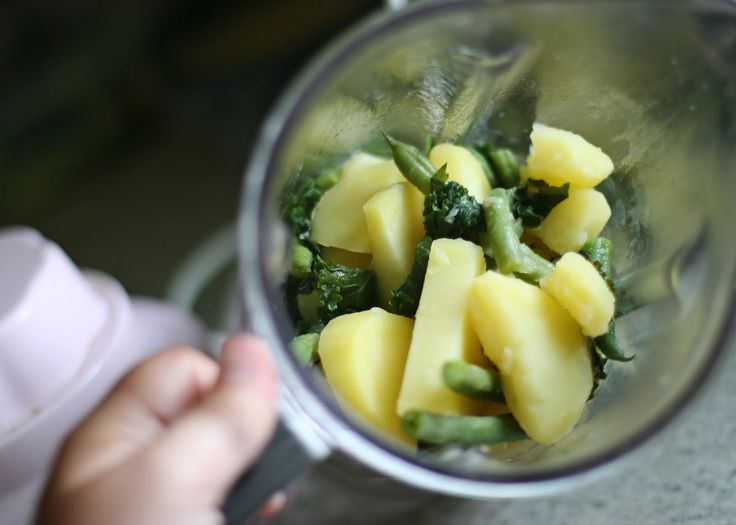Baby box turtle care feeding
How to Take Care of Baby Box Turtles
By Whitney Lowell | Updated September 26, 2017Proper housing and diet are important factors in raising baby box turtles. You can maintain a baby box turtle habitat outside or inside, depending on space and preference, as long as the cage is at least 4 feet long by 1 foot wide by 8 to 9 inches tall. Once you have the habitat set up, it's important to pick a healthy diet of animal proteins, fruits, vegetables, leafy greens and other vegetation.
Outdoor Habitat
If you're housing baby box turtles outside, predator-proof the enclosure. Use concrete blocks or wood all the way around the enclosure to create solid walls, and use a secure lid to prevent predators from getting into the enclosure.
Place the enclosure where it will receive a few hours of sunlight for basking and get plenty of shade, too. Plant vegetation along the sides of the habitat as well as throughout the habitat. Use leaf litter and logs for hiding, sleeping and hunting.
Fill a large, shallow dish with fresh water daily for soaking and drinking. Place the plate as close to level with the ground as possible so the little box turtles won't have any issues climbing into the water. If the inside of the plate is too tall, add stones to make getting out easier.
Spray the enclosure to make sure that the substrate is moist, but not soaked. Try a daily spraying routine, and adjust as necessary.
Indoor Habitat
If you prefer to house box turtles babies inside, consider a concrete mixing tub or a 50-gallon Christmas tree storage tub. Either is easy to set up. Otherwise, you can make an enclosure with finished lumber and line it with thick plastic, like a pool liner.
Use loose substrate that will hold moisture, such as finely shredded hardware mulch, loam compost, sphagnum moss or coco coir bedding. Do not use bedding that contains pesticides, perlite, manure, cedar, pine, corncob litter, play sand or alfalfa pellets.
Box turtles are diurnal. They need UV lighting, so place full-spectrum fluorescent lights 18 inches above the habitat. To create a diurnal setting, set a timer to a 12- to 14-hour day.
Use a heat bulb on one side of the habitat to maintain a basking spot between 85 to 88 degrees Fahrenheit.
Mist the enclosure daily to maintain a humidity level of at least 50 percent. You can use a warm air humidifier or partially cover the enclosure with a lid to help hold moisture in.
Baby Diet
Box turtles, omnivores, will eat insects, some invertebrates, fruits and some other vegetation. A baby box turtle diet should be 50 percent animal proteins, 25 percent fruits and 25 percent vegetation.
Feed baby box turtles daily around mid-morning after they've had a chance to warm up. Place the food on a flat dish or tile so that baby turtles will be able to easily see and get to the food.
If you notice that your baby box turtles are not eating, try moving the food plate to a secluded location; many baby turtles are shy about eating.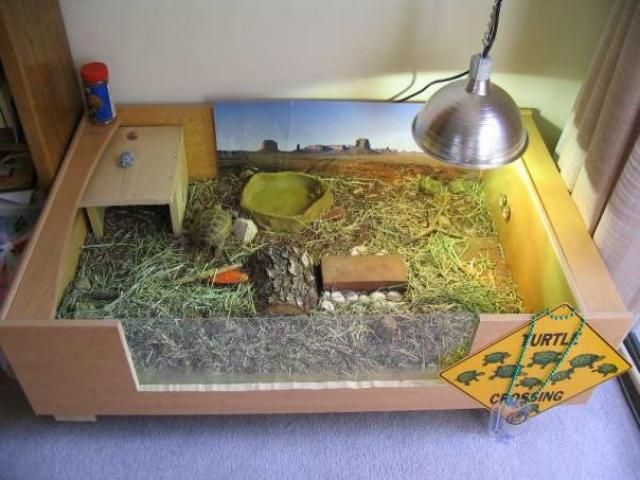 Try chopping the food into smaller pieces; large chunks can be intimidating for baby turtles -- stick with pea-size pieces.
Try chopping the food into smaller pieces; large chunks can be intimidating for baby turtles -- stick with pea-size pieces.
Don't feed the same items over and over. Feed a variety of foods from each food group:
- Animal proteins: night crawlers, snails, slugs, worms and crickets. Commercial turtle pellets and lowfat cat food can supplement proteins.
- Fruits: tomatoes, apples, melons, peaches, figs, grapes, mangoes and berries.
- Vegetables: green beans, peas, carrots, pumpkin, squash, bell peppers and okra.
- Leafy greens: endive, romaine and collard greens.
- Other vegetation: dandelions, leafy weeds, clovers and spineless opuntia pads.
Use a calcium supplement once a week. Never offer food that may have come in contact with pesticide or herbicide spray.
Growing Up Box Turtle
With proper husbandry and diet, a 2-inch-long baby box turtle will grow to be 8 to 9 inches and live 30 to 40 years in captivity. Care for juvenile and adult box turtles is similar to caring for a baby box turtle. The habitat that served your baby box turtles will suit one or two adult females.
Care for juvenile and adult box turtles is similar to caring for a baby box turtle. The habitat that served your baby box turtles will suit one or two adult females.
The main difference between caring for juvenile or adult box turtles and caring for baby ones is that you will reduce feedings from daily to two to three times a week during the juvenile period and after. Every box turtle is different, so when you notice your babies aren't eating as much of their daily meals, you can start alternating feedings.
Avoid housing two adult male box turtles, as territorial fighting and bullying can occur.
References
- California Turtle & Tortoise Club: A Guide to the Care of North American Box Turtles
- Exotic DMV: Indoor Care of North American Box Turtles
- American Animal Hospital Association: Box Turtle Care
Photo Credits
How To Take Care Of A Baby Box Turtle?
Are you wondering how to take care of your baby box turtle? Worry no more because we have come up with a guide that details everything you need to know about caring for baby box turtles.
Baby Box Turtles belong to the American Pond Turtle Family and are mainly found in North America. Their habits and appearance are similar to the tortoise. Baby Box Turtles require a great deal of care. So, keeping it as a pet is not an easy job to do.
I have put together this guide to help any who already has or plans to get a box turtle. It is important to remember that the first couple years of a turtle’s life are very formative and important for their future health and well-being.
The key steps to take care of a baby box turtle include providing a healthy diet, adequate enclosure, moist and humid environment, the right temperature, and proper lighting.
Taking care of a baby box turtle is much easier than caring for some other uncommon pets. If you want to get a different species of turtle, you should check out my more general article on caring for a baby turtle.
Provide a healthy dietFeeding your baby box turtle a healthy and balanced diet is an obvious necessity when considering your little one’s well-being. Their diet should ensure that all the nutrients your baby box turtle needs for growth and development are present.
Their diet should ensure that all the nutrients your baby box turtle needs for growth and development are present.
You should feed your baby box turtle daily. I would recommend feeding them a mix of insects/pellets and vegetables. You can also feed them fruit on a weekly basis.
My favorite food for box turtles is the Fluker’s Buffet Blend Box Turtle Food. It contains a mixture of fruits, vegetables, and mealworms.
Buffet Blend for Box Turtles
This tasty mix includes dried mealworms, pellets, green peas, and strawberries.
To get a more in depth guide on how much to feed your baby box turtle, you should check out my article on how much to feed a turtle?
This diet should cover all the vitamins, minerals, and proteins needed for their development. Adjust their diet according to their health, age, and activity level. Just make sure that you don’t overfeed or underfeed your baby box turtle.
If you have the right climate for baby box turtles, they do well in a large and heavily planted outdoor enclosure. The outdoor enclosure will provide your turtle with fresh air, sunshine, and environmental enrichment. You just can’t replicate their natural habitat inside. If you do have an outdoor enclosure, make sure they are protected from predators. My favorite enclosure for box turtles is the REPTI ZOO 85 Gallon Terrarium.
Box Turtle Terrarium
This terrarium will give your box turtle plenty of space to roam around and dig.
If you do put them in an inside turtle tank enclosure, I would recommend a size of at least 50 gallons. If you’re looking for cheap options, check out my article on cheap turtle tanks.
Give them a moist and humid environmentIn the wild, baby box turtles love to live near marshes, meadows, and freshwater. They can live in both dry and moist regions. Humidity should be kept at around 60 percent. You can also provide them pool time as they enjoy soaking in water. While they aren’t great swimmers, they do like to swim from time to time.
They can live in both dry and moist regions. Humidity should be kept at around 60 percent. You can also provide them pool time as they enjoy soaking in water. While they aren’t great swimmers, they do like to swim from time to time.
If you have other pet turtles or tortoises in your home, you will need to house your baby box turtle away from them, preferably in its own enclosure. The charming little thing needs privacy and has its own specific care needs.
Also, make sure you include a lot of substrate in your tank.
Provide adequate temperature and good lightingProvide them enough warm light. If kept indoors, keep the lights on for eight to ten hours during the day, but turn them off at night.
You will need to keep their environment’s temperature between 75 and 80 degrees farenheight. When indoors, provide them with a bulb or heat lamp to keep them warm.
Clean environmentWhether you are caring for your box turtle indoors or outdoors, it’s important to keep its environment clean. You should remove any debris or build up from the tank on a weekly basis. You should also do a more thorough clean of the tank once a month.
You should remove any debris or build up from the tank on a weekly basis. You should also do a more thorough clean of the tank once a month.
Did you know? An interesting fact is that these charming babies already know how to take care of themselves. In the wild, they are on their own right from day one. When you bring home a baby box turtle, the hatchling will orient you to the basics of their care!
Final thoughts
With the proper care and attention, your box turtle will be able to live a long and healthy live. Most box turtles live in captivity for at least 20 years.
With that in mind, you should only get a baby box turtle if you are ready for the long-term commitment. Even thought it won’t require a lot of work on a day to day basis, you are in it for the long run. As mentioned earlier, a baby box turtles early years are extremely important. It is important that you have all of the right turtle accessories.
Once a box turtle hits the maturity age, the chance of early death is reduced. In their natural habitat, baby box turtles save themselves from any attack by simply hiding and closing their shell.
In their natural habitat, baby box turtles save themselves from any attack by simply hiding and closing their shell.
You can help your baby turtle live its best life! A healthy and happy baby turtle can save you from a lot of stress in the long run.
Take care of your baby box turtle by providing them with the best enclosure, warm light, moist temperature, and healthy food.
After all, it’s really hard to find anything more adorable than a baby box turtle! If you want to read more, you should check out this article on
Best of luck!
- Dillon
- Box Turtles, Guides
Caring for the tortoise at home
Contents of the article
- Housing
- Hygiene
- Feeding
Many are mistaken, considering the tortoise unpretentious animal. At the same time, caring for a turtle will not be a burdensome burden for its owner if he approaches it responsibly. In general, caring for a land tortoise is based on three key points: hygiene, habitat arrangement and feeding. Before buying an animal, it is necessary to study these points in order to avoid problems in the future. nine0003
At the same time, caring for a turtle will not be a burdensome burden for its owner if he approaches it responsibly. In general, caring for a land tortoise is based on three key points: hygiene, habitat arrangement and feeding. Before buying an animal, it is necessary to study these points in order to avoid problems in the future. nine0003
Home improvement
Contrary to popular belief, it is not allowed to let the turtle “swim freely” around the apartment. A pet can climb into a secluded place from which it cannot get out, fall under the feet of one of the household members, or catch a cold. In this regard, it is advisable to keep the animal in a terrarium.
A terrarium with transparent walls from 50 cm long and 30 cm wide can be an ideal solution. A worthy alternative can be a house in which all the walls (except the front) are made of opaque material - plastic or painted wood. The main thing is that the material is well washed: this will facilitate the care of it. Such a terrarium can be created with your own hands. nine0003
Such a terrarium can be created with your own hands. nine0003
Hang two lamps above the terrarium. The first - with a conventional lamp with a power of up to 60 W, the second - with an ultraviolet. The ultraviolet lamp should be replaced from time to time (once a year and a half) with a new one. Ultraviolet is vital for the turtle: it promotes the absorption of calcium, which means it ensures the strength of the internal and external skeleton.
The terrarium should be covered with practical artificial turf. Some owners use natural materials for this: hay, coarse gravel and sawdust. As for the layer itself, ideally its thickness should be about 3 cm.
The terrarium must contain a "shelter" - a house in which the turtle can hide from prying eyes. You can make such a house yourself, with your own hands. It is desirable that the shelter be made of washable materials - this will facilitate its care.
Before you put your pet in the terrarium, make sure that you take care of buying a feeder and drinker. The best option is a wide round feeder made of heavy material. nine0003
The best option is a wide round feeder made of heavy material. nine0003
As for the drinker, it can be a ceramic container or a special drinker. It must be installed directly under the lamp so that the liquid in the container is always warm. Both the feeder and drinker should have low edges or be almost flat.
A well-equipped terrarium is the key to a long and happy life for your pet.
Hygiene
Caring for a turtle at home is impossible without hygiene. You need to bathe these exotic animals: they do not care for the soul in "bath" procedures. nine0003
Bathe your turtle as follows:
- Fill a container with warm water (about 36.6 degrees Celsius). Calculate the water level based on the height of the turtle (1/3 should be above water, and 2/3 should be under water).
- Place the animal in the container. Gently wipe the paws, shell and muzzle of the pet. To do this, use your own hand or a soft sponge. If there is serious pollution, you can bathe the turtle with soap.
 The main thing is to thoroughly rinse off the remnants of the product with warm water. nine0006
The main thing is to thoroughly rinse off the remnants of the product with warm water. nine0006 - Wipe the animal dry and place the pet in the terrarium.
Bathing tortoises is desirable once every 7 days; young individuals under two years of age - once every three days.
You also need to take care of your pet's claws - life at home does not allow them to grind naturally. Nails can be shortened as they grow back at home. To do this, you need to use nail scissors or nippers. Cut off a light fragment of the claw: in the dark area there are vessels that cannot be touched. nine0003
Don't forget to take care of the turtle's home. The terrarium should be washed periodically with soap, baking soda or other easy-to-rinse detergent.
When soiled, the filler must be changed. Wash the artificial turf or gravel as soon as it becomes dirty and place it back in the terrarium. Make sure that the feeder, drinker and turtle house are always clean. Clean up leftovers of uneaten food in a timely manner and change drinking water.
Clean up leftovers of uneaten food in a timely manner and change drinking water.
Keeping a turtle at home is wonderful. But sometimes you need to let your pet walk in the fresh air. It is possible to make forays into nature only when the air temperature rises above 25 degrees, and the sun warms the earth well. Before releasing an animal from your hands, make sure that there is no inedible grass on the field. Constantly keep an eye on your pet: the turtle can hide in the tall grass, and you will lose it forever. nine0003
Feeding
Many people have no idea what to feed the tortoise. Some people prefer to feed their pets with purchased food, but it’s really possible to cook food for a turtle with your own hands at home.
A typical food is a mixture of finely chopped vegetables, fruits, herbs, supplemented with vitamins and minerals. Keeping an animal in the summer is simple: just feed it with greens (clover, plantain, coltsfoot, dandelion leaves), berries (raspberries, strawberries, blueberries) and fruits. nine0003
nine0003
In the winter season, food should consist of vegetables and herbs (by 70%), fruits (by 25%), minerals and vitamins (by 5%). It is possible to make your own mineral supplement using bone meal or thoroughly washed eggshells. Foods best suited for feeding turtles are: carrots, cabbage/lettuce, apples.
To properly care for your pet, it is not enough to know what tortoises eat. It is important to understand what kind of food they absolutely cannot eat. Such food includes bread, food for other pets, milk, food from the human table, citrus peels, poisonous plants, seeds of berries and fruits, meat, insects, fish. nine0003
Keeping tortoises at home is not an easy task for an unprepared person. However, after reading the recommendations in this article, you will find that caring for a turtle is easy and extremely fun.
Authors of the articles: Belant clinic team
0003
Author profile
In 2018, my family and I bought a three-month-old water turtle.
Then I thought: well, what problems can arise with her? It takes up little space, eats little, practically does not crap and does not make any sounds at all. It almost turned out that way: the turtle does not cause much trouble, and I have already got used to frequent cleaning, constant splashes of water and gurgling.
In the article I will tell you where to buy and how to choose a turtle, how to equip an aquarium for it, what to feed it and how much money it takes to keep it. nine0003 This is our turtle, her name is Chipa
What turtles are
All turtles are divided into sea and land. Terrestrial are land and freshwater - water.
Land tortoises have a high shell and thick legs, they are slow and clumsy. Such turtles live on land - out of water, eat plant foods, often hibernate and can live in this mode for up to 150 years.
Aquatic turtles live in fresh water, so they have swimming limbs instead of legs. The shell of such turtles is oval-round, streamlined, low and smoother than that of land turtles. nine0003
nine0003
Water turtles are:
- Painted - with bright stripes and spots on the shell.
- European swamps - these have a long tail, up to 20 cm.
- Cayman - they grow up to 30 kg.
- Red-eared.
Red-eared tortoises are called because they have bright spots on the head next to the eyes - red, yellow or orange.
/petstat/
What pets do Russians keep
There are three subspecies of red-eared tortoises that differ only in appearance. nine0003
Red-eared or Florida subspecies - Trachemys scripta elegans. Such turtles grow up to 28 cm. You can recognize them by a red or orange stripe that starts from the eyes and runs along the entire neck, yellow stripes on the ribs of the upper shell - the carapace and two large yellow spots on the abdominal shell - the plastron. Such a turtle costs from 130 R.
Yellow-bellied slider - Trachemys scripta scripta.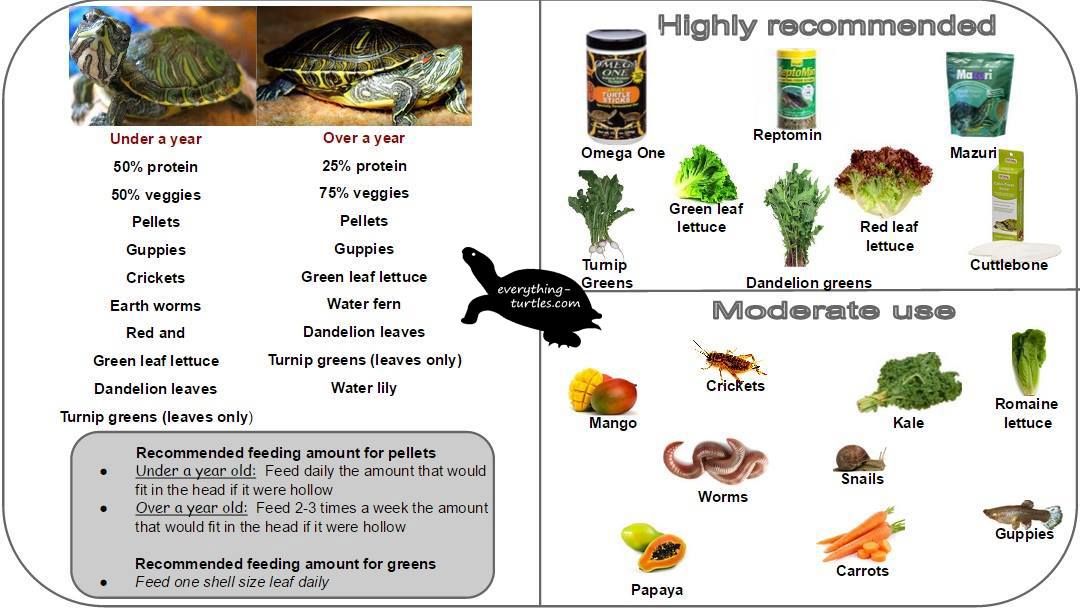 Sliders grow up to 27 cm. They have yellow spots and stripes: on the muzzle and neck, on the sides of the carapace and on the plastron. Price — from 240 R.
Sliders grow up to 27 cm. They have yellow spots and stripes: on the muzzle and neck, on the sides of the carapace and on the plastron. Price — from 240 R.
Cumberland subspecies, or Troust's tortoise, - Trachemys scripta troostii. These turtles grow up to 21 cm. They are distinguished by black spots on the belly, yellow stripes on the upper shell, behind the eyes and on the chin.
My Chipa belongs to the Florida subspecies. But the conditions of keeping for all red-eared turtles are the same, so everything that I will tell you next will be suitable for any subspecies.
What you should know about red-eared turtles
Red-eared turtles are strong and fast, but also unpretentious: they can go without food for up to ten days, and without water for up to five. Therefore, even beginners can keep them. nine0003
Turtles can live alone or in groups, but when they live in groups, they can be aggressive, fight and attack each other.
In order for a turtle to grow up healthy and live long, it needs clean water, heated land in an aquarium, high-quality and regular food. With proper and high-quality care, the red-eared turtle will live 30-50 years.
With proper and high-quality care, the red-eared turtle will live 30-50 years.
/pet-budget/
How much does it cost to keep a pet: 5 examples with calculations
They love attention. nine0130 Water turtles do not tolerate being ignored and love to watch people and what is happening in the apartment. For example, they will always swim up to the glass of an aquarium or get out to the surface if the owner is nearby. At the same time, turtles do not let people get too close and, as a rule, do not like being touched.
Chipa's aquarium is in the children's bedroom, opposite him is a table with a computer at which we often work: it turns out that the person sitting at the table has his back to the aquarium. For Chipa, this is a lot of stress. Each time, she tries with all her might to attract attention: she starts diving so that the spray reaches the ceiling, sorting out the stones at the bottom so that we hear a knock, or crawling with her belly on the grass on the bank - this is also loud. In general, she does everything to be noticed. nine0003
In general, she does everything to be noticed. nine0003
At the same time, the children's bedroom in our apartment suits her more than other rooms: the lights turn off calmly and early - the turtles do not sleep in the light and stay awake until the room is light.
This is what Chipa's aquarium looks like, it stands in the children's room opposite the desktopThey bite painfully. Even if you just hold out your finger to the turtle, it is a sign for him to open his mouth and bite. This is because turtles do not smell food, but immediately begin to eat it. If later, in the process of chewing, the turtle decides that she does not like the food, she will spit it out and will not take it again, because she remembered it. nine0003
But turtles bite very painfully: their jaws are powerful, even in small domestic individuals. Very small turtles, of course, will not bite hard, but adults are able to bite their finger until it bleeds. Our Chipa can bite when feeding, so we give her food not from our hands, but from tweezers or a toothpick.
/photo-liebe-tier/
From mini-pigs to seagulls: 10 rare pets that live with readers S-F
Love affection, but only in certain places. For example, Chipa loves when her belly is stroked, she rolls her eyes with pleasure. Some turtles also like touching their shells, but they start to make Chipa cringe and kick. nine0003
As a rule, turtles do not allow their heads and paws to be touched - they immediately hide them in their shells. But my colleague's red-eared turtle loves to massage its hind legs, and when it touches its shell, it starts to hiss. I think every turtle has its own favorite places to touch.
Chipa really likes it when I stroke her bellyThey hardly make any sound. Turtles can snort and hiss - this is how they show their displeasure, but they do it very rarely. Turtles usually hide in a shell or a secluded place. nine0003
Chipa usually snorts when I pick her up at an inopportune moment for her, such as when I want to show her to new people or check that she is healthy.
Where to buy a turtle
There are four options: from breeders, in a pet store, in a bird market and from hands on an ad, for example, on Avito.
A breeder is more likely to buy a healthy one because they tend to treat their pets well and take good care of them. They also know everything about turtles and are always ready to train new owners. nine0003
The average price for turtles from breeders is 250-400 R. We bought the chip for 350 R from breeders who have been breeding for more than one year and grow healthy, well-breeding turtles. At the age of three months, the turtle can already be taken to a new home.
350 Р
we paid for our turtle
By ad on special websites, for example, "Avito", you can find people who are ready to give away or sell their pets. It can be both adult turtles and babies. When buying, be sure to ask in what conditions the turtle was kept, inspect its home - the condition of the terrarium, its cleanliness, equipment.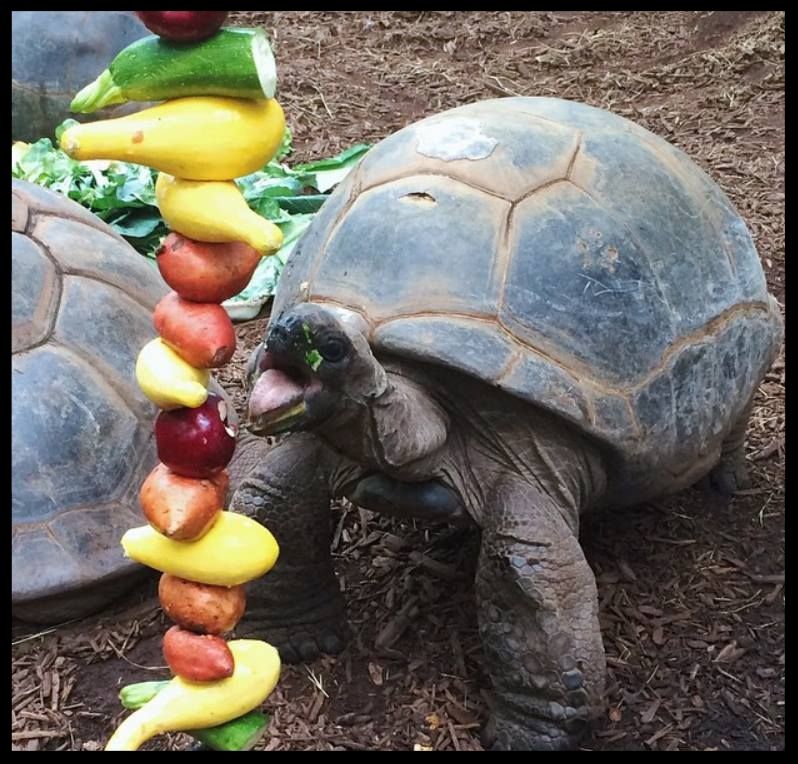 Ask what she was fed and what she likes, and examine the reptile itself. nine0003
Ask what she was fed and what she likes, and examine the reptile itself. nine0003
You can buy a turtle on Avito for 50-2000 R - the price depends on the age of the reptile and the equipment that comes with it. Adult turtles are often given away for free.
Here they sell a small turtle with an aquarium for 2000 R. Source: "Avito" And adult turtles can generally be given away for free. Source: "Avito"Pet stores mainly offer monthly turtles, which cost from 300 R. The plus of pet stores is that there you can get complete information about the content of these crumbs: where to start, which aquarium to buy, how to fill it in the first time and in the future. nine0003
But it is important to pay attention to the conditions in which the turtles are kept in the store: whether they have clean temporary housing and water, whether there is mucus or mud there. Ask the seller to show what tools they use to clean up after the turtles and what they are fed: the tools must be clean and the food must be of high quality.
Examine the reptile itself - pick it up. A healthy turtle should actively move its legs, tail, and head. The shell must be free of chips and cracks. The mucous membrane of the mouth should be pale pink - this means that the turtle is healthy. A sick reptile will have an abundant accumulation of saliva, and the mucous membrane will be red. nine0003
I don't recommend buying turtles at the bird market: sick individuals are often sold there, they can make a mistake with the sex and they don't give competent advice on care. One can only guess how the turtles were raised and under what conditions they were kept.
How to determine the sex of a red-eared turtle
We wanted to have a female turtle, since female red-eared turtles are calmer than males, less conflict and practically do not bite. We bought a chip for my daughter, and it was important for me that she could pick her up and feed her without fear. nine0003
At the same time, it is not easy to determine the sex of a turtle; this is usually done by several signs.
Made to measure. Male turtles are always smaller than females. Females, respectively, are more massive and larger.
Shell-shaped. In males, the shell is elongated, in females it is round and wide. Nature came up with this distinction to make it convenient for turtles to mate.
According to the claws - in males they are long and irregular in shape, while in females they are rounded and much shorter. nine0003 Female on the left, male on the right. The male differs from the female in long claws. Source: Our Green World
Down the sewer. The cloaca is the enlarged terminal part of the hindgut. In males, it is in the form of a line and is located far from the shell, while in females it is in the form of an asterisk and is located next to the shell.
Tail. The tail of the male is longer than that of the female. In addition, in the male it is thick and tapering towards the end.
Where to keep turtles
Red-eared turtles live in aquaterrariums, which are glass tanks partially filled with water. Plastic containers as a home for a turtle are not suitable: an aquaterrarium must have thermal and ultraviolet illumination and a piece of land, and it is difficult to organize this in a plastic tank.
Aquaterrarium selection. The red-eared slider is suitable for a rectangular silicate glass aquaterrarium. In addition to silicate, aquaterrariums are made of acrylic glass, but it is less durable, harder to clean and scratches a lot. nine0003
/aquarium-cost/
How much does it cost to keep an aquarium
The size and volume of the aquarium depends on the size of the turtle. For an adult in width, it should be from six longitudinal dimensions of its shell. If you decide to have a pair of turtles, then individuals measuring 20-30 cm will definitely need an aquarium with a volume of at least 150-200 liters.
Suitable aquarium parameters for turtles
| Turtle age | Her size is | nine0263 Aquarium volumeAquarium size | |
|---|---|---|---|
| Newborn | 3 cm | Up to 45 l | 35 x 25 x 30 cm |
| 1 year | 10-12 cm | Up to 50 l | 45 x 30 x 35 cm |
| 2 years | 15-20 cm | 80-100 L | 60 x 35 x 57 cm |
| 3 years | 22-27 cm | nine0275 100-150 l70 x 40 x 57 cm | |
| Over 3 years | 30-35 cm | From 180 l | 80 x 40 x 55 cm |
newborn
Its size
3 cm
Aquarium volume
to 45 l
Aquarium size
35 × 30 × 30 cm
10-12 cm 9000
Up to 50 l
Aquarium size
45 × 30 × 35 cm
2 years old
Its size
15-20 cm
Aquarium volume
80-100 l
Aquarium size
60 × 57 cm
9000 9000 3 yearsIts size
22-27 cm
Aquarium volume
100-150 L
Aquarium size
70 × 57 cm
older than 3 years
30–35 cm
Aquarium capacity
From 180 l
Aquarium size
80 × 40 × 55 cm
Our Chip is 2 years old, it is 13 cm long. see As long as this space is enough for her.
see As long as this space is enough for her.
The water in the aquarium should be about ⅔ of its volume - no more. Ideally, when there is still 20-30 cm from the water to the edge of the aquarium. Turtles are suitable for drinking tap water with a pH of 6-8. But before launching a turtle into such water, I recommend standing it for 1.5-2 hours. nine0003
You can buy aquaterrarium in a pet store or on a classifieds website. The average price of a tank for 40-50 liters is 800-1200 R, for 80 liters - 1500-2000 R, from 100 liters - 3000-7000 R. It all depends on the configuration: is there a built-in shore or a lamp in the set.
On "Avito" you can find terrariums in good condition with all accessories from 1500 R per 20 liters. Source: "Avito" But such an aquaterrarium can be bought at a pet store. The average cost of a turtle for 80 liters is 1500 R. Source: "Hares"
Source: "Hares" Islet is an obligatory element of an aquaterrarium: a turtle must have a place on land where it can rest and bask in warmth.
The surface of the beach itself and the ascent to it must be made of non-toxic and non-slip material - the turtle should easily climb the ladder to the island. Rough stones, stone chips, artificial grass are suitable.
If you buy a special aquarium for turtles, it must already be equipped with an island. For example, it could be a glass ledge attached to the wall of an aquarium. nine0003
/life/ali-pets/
What to order on Aliexpress for pets: 8 verified products
If the aquarium does not have an island, then it can be purchased separately at the pet store. The average price is 330-500 R. Such a product is attached to the suction cups to the walls of the aquarium or to the bottom. It should be made of glass, stone or food-grade plastic.
This is how a separate island may look like - it is placed in the aquarium at the bottom. The cost depends on how the island is sheathed. For example, if it is a stone, then its price will be higher. Source: "Aquadom" This is how the island attached to the walls of the terrarium looks like. Source: "Four paws" And this is an island made of food plastic on suction cups. The price of such an island on Aliexpress is 280-380 R, in a pet store - 500-600 R. Source: Aliexpress
The cost depends on how the island is sheathed. For example, if it is a stone, then its price will be higher. Source: "Aquadom" This is how the island attached to the walls of the terrarium looks like. Source: "Four paws" And this is an island made of food plastic on suction cups. The price of such an island on Aliexpress is 280-380 R, in a pet store - 500-600 R. Source: Aliexpress Soil works as a biological filter: useful microorganisms, bacteria and fungi settle in it, which process the waste products of turtles.
Usually the soil is stones and shells. After purchase, they must be thoroughly rinsed in running water.
River sand cannot be used for aquaterrariums: it will simply lie on the bottom in a dense layer and begin to rot, and when shaken, it will release methane, hydrogen sulfide and ammonia. This is dangerous for reptiles. Shell rock, coral sand and marble contain calcium carbonates, which increase the hardness of water - they also cannot be used. nine0003
nine0003
The ground should not take up too much space: turtles are active reptiles, they need to swim. It is also important that the rocks and shells are large enough so that the turtle cannot swallow them. Do not place sharp objects in the aquarium so that the turtle does not get hurt.
The average price for soil is 120-200 R per 1 kg.
This is how the soil in the aquaterrarium near Chipa looks like - large rounded stones. This is also soil - pebbles 5-10 mm. Price - 122 R for 800. Source: ZapovednikAs decoration for aquaterrarium, you can buy mangrove snags, dead branches of beech, alder, maple, ash at the pet store. And on the back wall of the aquaterrarium, you can add a background - a color picture from photographic paper. We bought this in a pet store, it is most often sold in cuts. For a segment of 45 × 30 cm, we paid 170 RUR.
The average price for a wood composition is 350-600 RUR.
Plants can also be added to the aquaterrarium. For example, cryptocorynes, small arrowheads, anubias, Japanese capsules are suitable. But it is important that the plants are not poisonous: turtles are gluttonous and will gnaw at plants, pull them out or break them. nine0003
For example, cryptocorynes, small arrowheads, anubias, Japanese capsules are suitable. But it is important that the plants are not poisonous: turtles are gluttonous and will gnaw at plants, pull them out or break them. nine0003
The average price for a plant sprout in a pet store is 450-600 R.
A small mangrove driftwood 15-25 cm in size can be bought for 500 RUR. Source: AvitoLighting and heating of the aquarium
To make the turtles feel like they are in their natural environment, you need to select and install a regular lamp for lighting and an ultraviolet lamp for heating above the aquarium. In addition, you additionally need to heat the water with a special heater. nine0003
A simple table lamp can be used to illuminate . It should burn for 10-12 hours a day, it must be turned off at night. Just place the lamp above the aquarium so that water splashes do not fall on it - turtles do not dive too gracefully and usually raise a flurry of spray. You can even protect it with a ceiling.
You can even protect it with a ceiling.
UV lamp replaces the sun for reptiles. The lamp emits ultraviolet light, which is necessary for the turtle to receive vitamin D - it is vital for it to absorb calcium, strengthen the shell and prevent many diseases. From a lack of vitamin D, the shell of turtles becomes soft and curved, and a deficiency leads to rickets, a deadly disease in which the skeleton and shell of the turtle are irreversibly deformed.
The UV lamp should not burn all daylight hours - it is enough to turn it on for 1-2 hours a day. nine0405 Food and synthetic vitamins will not replace special lighting.
For aquaterrariums, a UV lamp with a UVB and UVA spectrum is suitable - these are ultraviolet rays that differ in wavelength. A suitable UVA is 30%, UVB is 5-12%. Information about the value of UVB and UVA is indicated on the packaging of the lamp.
Information about the value of UVB and UVA is indicated on the packaging of the lamp.
UV lamps for turtles can be:
- in the form of T5 or T8 fluorescent tubes - they are inserted into special grooves in the lid of the aquaterrarium, if any. Tubes come in different capacities and different lengths - the level of ultraviolet radiation directly depends on it; nine0006
- with standard E27 base.
You can buy a UV lamp at a pet store with a terrarium department or online. One UV lamp is enough for a year: then the light intensity decreases and the lamp becomes useless.
Do not use blue heating and quartz lamps used in medicine for aquariums - they emit ozone toxic to reptiles, as well as lamps for drying gel polish: because of them, turtles can burn the cornea.
I recommend Arcadia, JBL, Zoomed or Sylvania UV lamps. The average price is 700-1500 R.
This is what a tube lamp looks like. Source: "Yandex-Market" And so - a lamp with a conventional base. Source: magizoo.ru
Source: magizoo.ru Heating in an aquaterrarium is needed to establish and maintain a microclimate comfortable for turtles and a stable temperature. To do this, a special heater is immersed in water. The optimum temperature for terrariums — +26…30 °C — is constantly maintained.
Heaters are available in glass and plastic. Plastic is good because the turtle will not be able to get burned on it or break it. And the glass one has a built-in thermostat that turns off the heating when the temperature has reached the desired value. Then, when the temperature drops, it turns on again. nine0003
550 Р
we gave for an aquarium heater
The heater is usually attached to the aquarium with suction cups. To prevent turtles from tearing it off and chasing it around the aquarium, you can fill it with stones, and for highly aggressive individuals, you can even separate it with a wall.
Select a heater based on 1 W per 1 liter of aquarium volume. You can buy it in aquarium departments, pet stores, online stores. The average cost is 500-1500 R.
You can buy it in aquarium departments, pet stores, online stores. The average cost is 500-1500 R.
For Chipa, we chose a horizontal-type glass heater with suction cups from Barbus. It is inexpensive - we paid 550 R, and the temperature scale is clearly visible on it. nine0003 This is how our heater looks like, it is attached to the wall of the aquarium. A Barbus heater, glass, with a power of 100 W, costs 677 R for a volume of 90-120 liters. Source: Yandex Market
Filters for aquariums
- it is needed to purify water and saturate it with oxygen. There are two types of aquarium filters depending on where they are located: internal and external.According to the type of fillers that fall into the filters, they can be:
- Mechanical is a simple device consisting of a motor and a foam tube. These filters usually do not have a compartment for additional filler, so they are only suitable for small aquariums with one turtle. Usually internal filters are always mechanical.
 Price - from 370 R.
Price - from 370 R. - Biological - these are filters with a special compartment where a filler is placed for the reproduction of beneficial bacteria. They not only purify water, but also regulate the biobalance - saturate the water with beneficial microflora. Price — from 280 R.
- Chemical is a filter with an adsorbent, that is, a substance, such as coal, that absorbs impurities and purifies water. Price - from 550 R.
- Combined - combine different fillers. As a rule, this is the most suitable option for any aquarium. Price - from 990 R.
External filter is suitable for aquariums from 50 liters. The block of such a filter is mounted outside the aquarium, and only tubes and hoses go inside. There is also a pump in the filter - it pumps water from the aquarium to the filter and back. nine0003
The external filter collects all the dirt in a special compartment where the cleaning granules are located - the filter media. Thanks to the filler, such a filter can affect the biobalance of the aquarium.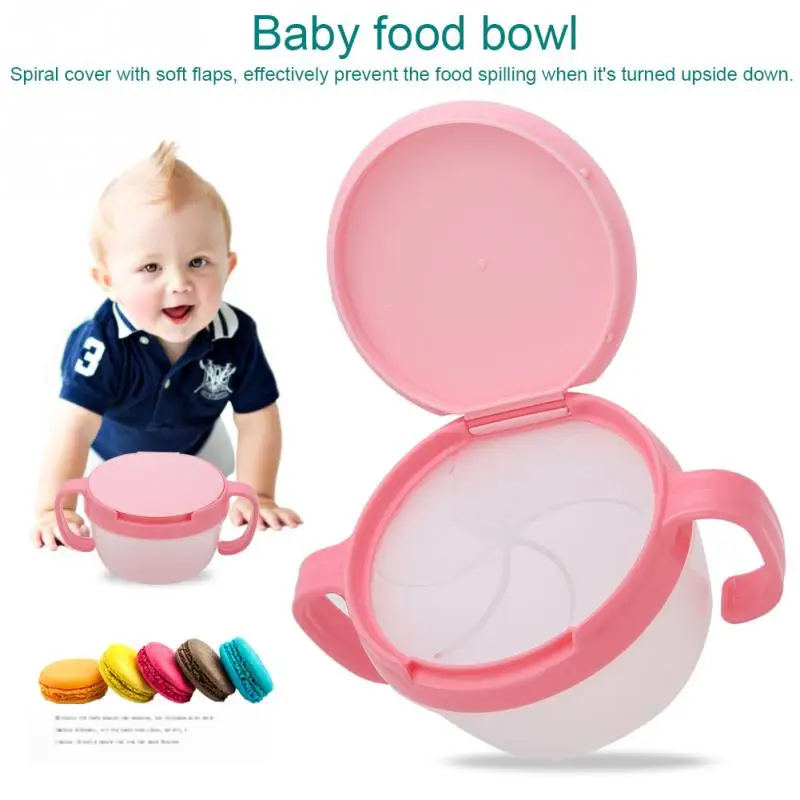
The internal filter is a plastic container with holes on the sides through which water penetrates. Inside such a container there is a cartridge with a special filler, most often a foam rubber sponge, which purifies the water. Over time, beneficial bacteria accumulate in the cartridge and the filter begins to function as a biological filter. The internal filter also has a pump with a diffuser - it pumps water and saturates it with oxygen. For everything to work correctly, you need to connect a hose to the diffuser, usually with a diameter like that of a compressor, the other end of which will not be in the water. nine0003
650 R
we paid for the 40 l internal filter
The internal filter is convenient in that it can be installed in any position - horizontally or vertically, so it is suitable for small aquariums up to 50 liters: large aquariums have large turtles can easily damage the filter or gnaw through the tubes.
Care of the aquarium
The aquarium in which turtles live should be cleaned regularly. If this is not done, plaque forms on its walls, the water becomes cloudy and smelly.
To prevent the water from becoming contaminated with food residues, it is recommended to place the turtle in a separate container for feeding.
Small aquariums up to 80 liters can be cleaned once a week. In large ones, from 100 liters, less often - once every 40-45 days. This is quite enough, because large aquaterrariums are usually equipped with powerful filters. nine0003
Chipa has a 45-liter aquarium, she lives in it alone, so we clean every two weeks - that's enough.
It is not necessary to use special products for cleaning the terrarium - it is enough to wash everything with soapy water and rinse well.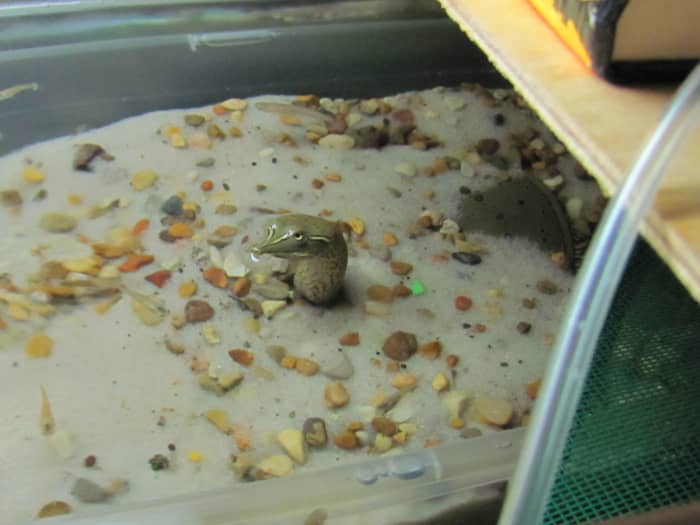 I'll tell you how I clean up.
I'll tell you how I clean up.
To begin with, I plant Chipa in a bowl of water at room temperature. So that she would not be bored, I throw a handful of dry gammarus - these are small dried crustaceans and lettuce leaves: she will quickly eat the crustaceans, and play with the leaves. nine0003
Next in the aquarium, I always turn off all the devices, remove the soil and plants. Everything must be washed thoroughly. Water from the terrarium can be drained with a hose into a bucket or basin, but we scoop it out with a ladle into a bucket and pour it into a bathtub.
To wash the aquarium itself, I do not use any special products: I lather the sponge with ordinary soap and carefully wash the walls, bottom and island. I clean the corners and joints with a cotton swab. I also wash the stones and soil with soapy water and a hard sponge, and clean small pebbles with a toothbrush if necessary. I disassemble the filter and wash it together with the heater in the same way - with soap.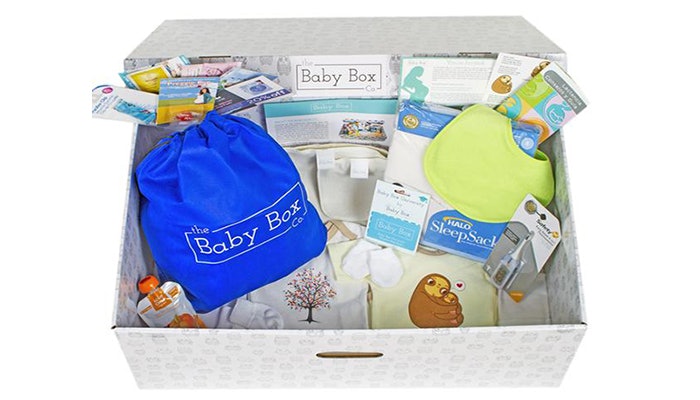 nine0003
nine0003
After that, I put everything back: I put stones and soil on the bottom, put an island, put the heater and filter back in place. Then I put the aquarium in place and fill it with water, connect the filter and the heater.
When the water temperature rises to 26 °C, I start Chipa and forget about cleaning for two weeks.
/prava/zhivotnye/
Rights if there are pets
Disinfection of the aquarium is necessary if you move turtles from one tank to another, add a new tenant or if the turtle in it is sick or dead. nine0003
Disinfection is carried out with special means, you can use:
- Chloramine solution 1% - it is washed off and weathered without problems if the terrarium is washed well after treatment. You can buy "Chloramine" in any pharmacy or hardware store, the cost is from 89 R for a package of 300 g;
- solution "Virkona-S" 1% - helps to cope with viruses and fungi.
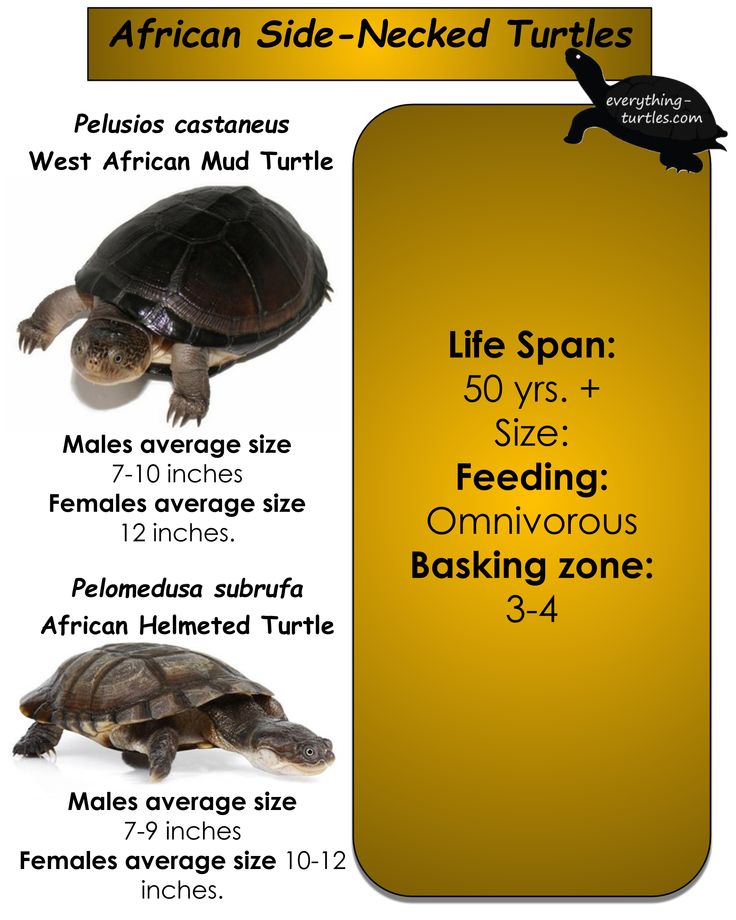 They irrigate the terrarium, then rinse thoroughly with running water. It costs 310 R for a package of 50 g;
They irrigate the terrarium, then rinse thoroughly with running water. It costs 310 R for a package of 50 g; - Chlorhexidine is a common antiseptic and bactericidal agent that can also be used for aquaterrariums. The surface is treated with a solution at a concentration of 0.01% or less. It costs from 15 R per 100 ml.
Turtle Care
You need to take care not only of the aquarium, but also of the turtle itself - bathe it and monitor the condition of the claws and beak.
Bathing. Just because a turtle is constantly in the water, it does not mean that it does not need to be washed. The reptile itself should be cleaned at least once a week and a half. To bathe and clean the turtle, you will need a foam sponge, fragrance-free baby soap, and a paper towel. nine0003
Turtle shells are hard but very vulnerable. Therefore, under no circumstances should hard brushes, scrubbers, shower gel and household detergents be used. A The water must be at room temperature.
Gently wipe the turtle with a sponge and soap, but be careful not to get the foam in its eyes, mouth and nose. After washing, pat the turtle dry with a towel.
It is not necessary to cut the turtle's nails , this is done when they interfere with the reptile's movement or cling to stones, plants or bank hair. nine0003
You can cut the turtle's nails with ordinary nail scissors or wire cutters. Only the keratinized part of the claw should be removed: there are no blood vessels there. If you accidentally cut off the excess and blood began to flow, the wound must be treated with a cotton swab dipped in hydrogen peroxide.
The beak of turtles is also trimmed, or rather bitten off with wire cutters, but only if it is noticeably bent into the shape of a horn. The excess of the beak is bitten off, and then leveled with a file.
If you cannot cope with this task on your own, you can contact your veterinarian. I took the chip for a beak haircut to the clinic only once, I paid 150 rubles for the procedure.
What to feed the red-eared turtle
Before feeding, the turtle must be removed from the aquarium to another container so that no food remains in the terrarium and, therefore, the water is not polluted. A bowl, pot, container, or bath will do. I feed Chipa in a bowl: I prick a piece of food on a toothpick, serve it to Chipa and she grabs it from the toothpick.
Feeding should preferably be done in the morning, so that the turtle has time to warm up under the lamp and digest food before going to sleep. nine0003
The basis of the turtle diet, 80%, is meat, offal, fish, seafood, eggs, cottage cheese and insects, that is, food of animal origin. The rest of the diet consists of fruits, vegetables, herbs and ready-made industrial feed.
/discuss/looking-for-feed/
Which pet food should I choose?
Baby turtles, up to a year old, while they are actively growing, are fed small portions every day. After a year, it is enough for turtles to eat 2-3 times a week. An adult reptile can go without food for up to 10 days, so turtles as pets are great for those who often leave home. nine0003
An adult reptile can go without food for up to 10 days, so turtles as pets are great for those who often leave home. nine0003
There are two ways to calculate the amount of food for your turtle:
- by time - how much food the turtle can eat in 30 minutes;
- according to the size of her head - up to one and a half years, the portion should be no more than one of her heads, and from one and a half to three years - two heads. For individuals from three years old, the portion should be equal to half of its shell.
Meat and offal. Rabbit, chicken and turkey, horse meat and beef are suitable for turtles. The meat is given raw, cut into small pieces. nine0003
Offal can be given raw or cooked, but there are more useful elements for turtles in raw. Turtles can have navels and liver - chicken and beef. It is impossible - pork and lamb: meat of fatty varieties is poorly digested in them.
During the growth period, meat is given 3-4 times a week, for turtles from a year - once a week.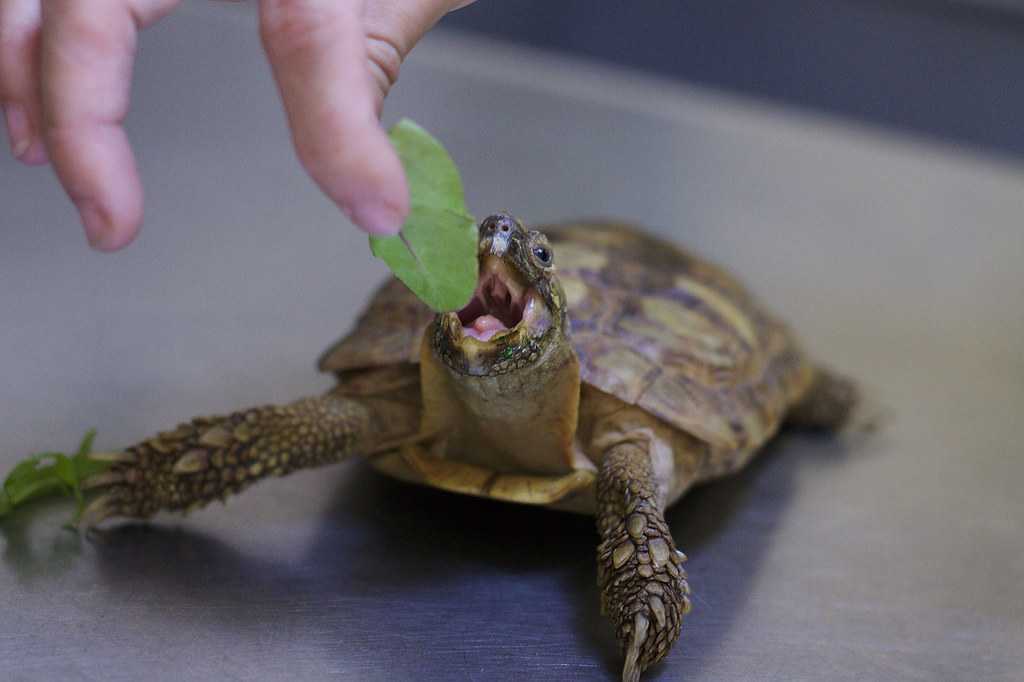
On average, I spend 300 R per month on meat for Chipa.
Chopped chicken breast for ChipsFish and seafood. Marine fish is allowed for reptiles, but not fatty varieties: haddock, halibut, cod. From the river, perch, pollock, sprat, hake, herring are suitable. We offer the fish to the turtle every other time. nine0003
Before feeding, be sure to remove all large bones, scales and entrails from the fish: the turtle can choke or damage the internal organs on sharp bones.
It is not necessary to boil the fish. To get rid of harmful microorganisms and worms that may be in raw fish, I recommend keeping it in the freezer for 5-6 days.
Shrimps, mussels, squids, snails are useful for turtles. They can be boiled or given raw. I prefer to give everything to Chipa raw: I think there are more vitamins and elements useful for turtles in such products. nine0003
The pet store also sells gammarus, a dried crustacean that contains a lot of calcium and is liked by turtles. I give it to my Chip every time at the end of feeding - for dessert.
I give it to my Chip every time at the end of feeding - for dessert.
I spend about 250 R per month on fish and seafood for Chipa.
At the same time, you cannot feed a turtle only with meat and fish: rickets, hypovitaminosis A may develop. Therefore, the rest of the menu should consist of insects, cottage cheese, eggs and vegetables with fruits.
Eggs and cottage cheese. Turtles are given cottage cheese, and it is desirable that the grains are large: small ones sink in water and it is difficult for turtles to collect them. Cottage cheese is given to turtles no more than once a week. Small individuals can be given it every other day. nine0003
Eggs are given boiled, cut into large pieces - they are easily bitten off and do not crumble. For turtles, both protein and yolk are useful. You can give 1-2 times a week.
Chipa eats 4 eggs and 200 g of cottage cheese per month. On average, I spend 120 R.
Insects can be given to turtles 1-2 times a week. In summer, you can pamper your pet with live grasshoppers, earthworms, beetles and furry caterpillars. In the pet store you can buy mealworms, gammarus and feed them to the turtle even in winter. nine0003
In summer, you can pamper your pet with live grasshoppers, earthworms, beetles and furry caterpillars. In the pet store you can buy mealworms, gammarus and feed them to the turtle even in winter. nine0003
You can buy live bloodworms at specialized animal markets. It can be stored in the refrigerator for up to three days, wrapped in paper, or in a container with holes.
Plant food can be given with every meal, along with meat or fish. From fruits, bananas, apples, peaches, pears, apricots, plums, melons, watermelons are suitable. From vegetables - zucchini, carrots, tomatoes, bell peppers, cabbage, cucumbers, legumes.
Everything is given raw and finely chopped, fruit can be mashed. Large individuals can also be given large pieces - they themselves will bite off as much as they need. nine0003
In the summer, for Chipa, I pick plantain and dandelion leaves right on the street - she likes them very much. You can also offer clover and coltsfoot to the turtles, but Chipa doesn't like them.
Many turtles like dried seaweed, but it is better to offer it only as a treat: cabbage has too much iodine for reptiles. Our Chipa didn't even try it - apparently, she didn't like the smell.
Some even like mushrooms, but they can only be given once a week - too high in calories for turtles. Suitable boletus, russula and champignons. Mushrooms can be given raw, but it is better to scald them with boiling water first. nine0003
I spend about 150 R per month on vegetable food for Chipa.
Chopped vegetables for chips. I feed them by hand. The portion is approximate, but most often Chip does not eat it either Ready-made dry food is available in granules, flakes, capsules and tablets. The problem is that it does not always meet the needs of turtles. Most manufacturers simply modify dry fish food and sell it as reptile food. At the same time, the composition may contain fishmeal that is harmful to turtles. Because of it, the digestive system stops working normally, growth is stunted and the energy balance is disturbed. The turtle will fill his stomach with them, but at the same time he will remain hungry. nine0003
The turtle will fill his stomach with them, but at the same time he will remain hungry. nine0003
Here are the complete foods that have worked well in my experience and breeders' opinions:
- Tetra's ReptoMin Menu in cans and sticks - consists of dried shrimp, offal mini sticks and krill. The food is well balanced, contains calcium, amino acids, polypeptides. The cost is 316 R per 250 ml.
- ReptoMin Baby by Tetra is suitable for turtles up to a year old. It has a lot of calcium to strengthen and grow the shell and bones. A 100 ml jar costs 185 R.
- JBL Schildkr tenfutter is a mixture of crustaceans and insects. A 250 ml can costs Rs. 350.
- ProBaby JBL is suitable for young animals. A 100 ml can costs 290 R.
Here are a few more manufacturers you can trust: Sera, Fin, Nutra, Zoomir.
Tetra also has good supplements and treats for reptiles:
- Tetra Gammarus — dried gammarus, 250 R for a 250 ml can.

- Tetra ReptoMin Delica Shrimps - Freeze Dried Shrimps, 390 R per jar 250 ml.
- Tetra ReptoDelica Grasshopers - dry grasshoppers, 430 R per 250 ml jar.
I feed Chipa with dry food infrequently - about once a week, but sometimes I can add it to vegetables or fish if I see that she has not eaten enough. If the food is good, then constant feeding will not harm them. I spend about 300 R per month on food. Another 200 R per month goes to dry gammarus.
These are Tetra sticks and "Tortilla" mixture from Zoomir, which I feed to Chipa What can not be fed to the red-eared turtle. Turtles are forbidden to give food from the table - any spicy, salty or, conversely, sweet foods. For example, onions, garlic, radish, eggplant, chocolate, sausage, cheese, flour products are not allowed. Also, turtles should not eat berries and fruits with peel and bones, lamb, goat meat, sea and river fish of fatty varieties, such as carp, sturgeon, river trout.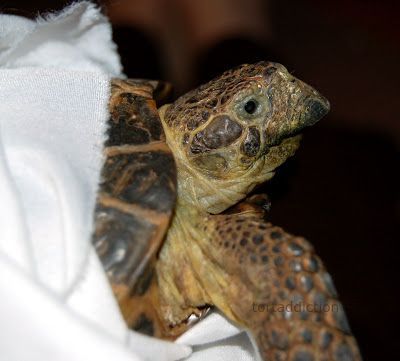
What to do if the turtle gets sick
To avoid severe illness and complications, pay attention to the appearance and behavior of the turtle. Here are some symptoms that may indicate the disease:
- Turtle does not dive, constantly sits on land, eats poorly, lethargic. This can lead to pneumonia.
- The turtle has a noticeably swollen cheek, asymmetry of the head, lack of coordination of movements, refusal to eat. These are symptoms of otitis media. If you notice the release of pus through the skin, you can independently treat the wound with an antimicrobial ointment. And be sure to heat the water in the aquarium by 3-4 °C.
- Detachment of the horny plate from the middle of the carapace, delamination of the carapace with blood or ulcers under the layers. This can manifest itself as a lack of vitamins A and B2 or a fungus - in this case, you will need a thorough cleaning of the aquaterrarium with disinfectants.






